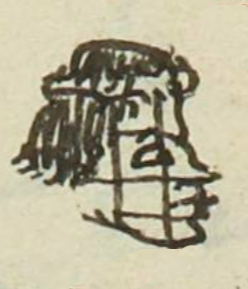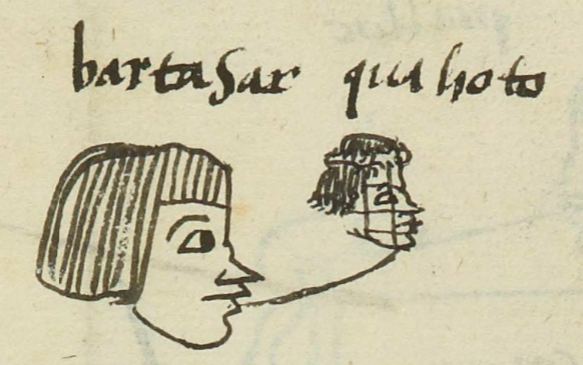Cuaoton (MH553r)
This black-line drawing of the compound glyph for the personal name Cuaoton (“Head of an Otomí,” attested here as a man’s name) shows a profile view (looking right) of the head of a man with face paint or tattooing involving intersecting vertical and horizontal lines at right angles. The hair on his head is shaggy, and he may be wearing a horizontal head band.
Stephanie Wood
In this digital collection, face paint or tattooing has ethnic associations, involving Chichimecs, the Otomí, the Tlaxcalteca, and those who were “different” (e.g. the Tlamaca). Divine forces, such as Ecatl (or Ehecatl) and Xolotl, also have some face paint or tattoos.
Stephanie Wood
1560
José Aguayo-Barragán and Stephanie Wood
heads, cabezas, otomies, otomites, otomíes, ethnicities, etnicidades

cua-, head, https://nahuatl.wired-humanities.org/content/cua-2
cua(itl), the head, https://nahuatl.wired-humanities.org/content/cuaitl
Otomi(tl), a culture group, ethnicity, https://nahuatl.wired-humanities.org/content/otomitl
La Cabeza del Otomí
Stephanie Wood
Matrícula de Huexotzinco, folio 533r, World Digital Library. https://www.loc.gov/resource/gdcwdl.wdl_15282/?sp=185&st=image
This manuscript is hosted by the Library of Congress and the World Digital Library; used here with the Creative Commons, “Attribution-NonCommercial-ShareAlike 3.0 License” (CC-BY-NC-SAq 3.0).





